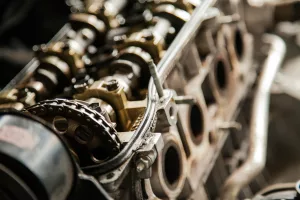Self-driving cars, marvels of modern technology, have transformed the way we perceive transportation. They rely on a sophisticated interplay of various sensors and technologies to navigate their environment effectively. This article takes a deep dive into how these autonomous vehicles perceive their surroundings, explores the technologies involved, and provides practical insights into their functioning. Autonomous vehicles employ a combination of advanced sensors to gather data about their environment, with sensor fusion being a key element. By integrating data from multiple sensors, these cars construct a rich, multidimensional view of their surroundings. This holistic perspective is crucial for detecting obstacles, planning routes, and making split-second decisions on the road.
Sensor Fusion in Depth
Sensor fusion is akin to combining the strengths of different individuals to form a highly effective team. Each sensor type has its unique strengths and limitations. For instance, cameras offer high-resolution visual data but struggle in low-light conditions. LiDAR, on the other hand, provides precise distance measurements and excels in building detailed 3D maps, but it can be expensive and energy-consuming. Radar stands out in adverse weather conditions and can detect objects hidden from view, while ultrasonic sensors are excellent for short-range detection, crucial for parking maneuvers.
Practical Example: A Day in the Life of Sensor Fusion
Imagine a self-driving car navigating a busy urban street. As it approaches an intersection, the car’s cameras identify traffic lights and road signs, while LiDAR maps out the 3D layout of the surrounding vehicles and pedestrians. Radar assesses the speed and distance of approaching cars, crucial for collision avoidance. Meanwhile, ultrasonic sensors ensure safe distances when parking or during close maneuvers. The fusion of these sensors allows the vehicle to “see” and interpret its environment comprehensively.
Enhancements in Sensor Technology
Recent advancements have enhanced sensor capabilities, reducing costs and improving efficiency. For instance, solid-state LiDAR systems are now more compact and affordable, making them viable for widespread use in consumer vehicles. Similarly, innovations in radar technology have led to higher resolution and better detection capabilities, allowing self-driving cars to distinguish between stationary and moving objects more effectively.
Computer Vision Unpacked
Computer vision, a subset of artificial intelligence, enables autonomous vehicles to interpret and understand the visual world. Cameras capture images and videos, which are then analyzed using deep learning algorithms to identify objects like pedestrians, cyclists, and other vehicles. This technology is fundamental for tasks like lane detection, where maintaining the correct lane is essential for safe driving.
Step-by-Step: How Computer Vision Works
- Image Capture: Cameras continuously capture high-resolution images of the surroundings.
- Preprocessing: The images are adjusted for lighting, noise, and other distortive factors.
- Object Detection: Algorithms identify objects within the images, tagging them with bounding boxes.
- Classification: Detected objects are classified into categories such as cars, pedestrians, traffic signs, etc.
- Tracking: The system tracks the movement of these objects over time to predict their trajectories.
Real-World Implications
Consider a scenario where a cyclist suddenly crosses the street. The computer vision system must quickly recognize the cyclist, predict their path, and adjust the vehicle’s speed or direction accordingly. This rapid analysis and response are crucial for preventing accidents and ensuring passenger safety.
Advances in Computer Vision
The integration of neural networks and deep learning models has significantly improved the accuracy and speed of object detection and classification. These models are trained on vast datasets, allowing them to recognize a wide variety of objects and scenarios. As a result, modern computer vision systems can handle complex urban environments with numerous dynamic elements, such as crowded intersections and busy pedestrian zones.
LiDAR Technology: A Closer Look
LiDAR, a game-changer in self-driving technology, uses laser pulses to measure distances, creating high-resolution 3D maps of the environment. This technology is invaluable for its accuracy and detail, allowing vehicles to perceive obstacles with precision.
Case Study: Navigating Complex Environments
In environments like construction zones or urban settings with complex layouts, LiDAR shines. Its ability to map out detailed 3D representations helps vehicles navigate through narrow lanes and around unexpected obstacles. For instance, during tests in a busy cityscape, LiDAR allowed a vehicle to detect and avoid an open manhole cover, a task challenging for other sensors.
LiDAR in Rural and Urban Settings
While LiDAR excels in urban environments, its benefits extend to rural settings where road markings may be less visible or poorly maintained. LiDAR can identify road edges, potholes, and other anomalies that would be challenging to detect with cameras alone. This capability ensures safe navigation on country roads and less structured environments.
Radar Systems: All-Weather Reliability
Radar complements other sensors by providing reliable data regardless of weather conditions. Its radio waves can penetrate rain, fog, and snow, making it indispensable in maintaining operational safety in diverse climates.
Practical Application: Weathering the Storm
Imagine driving through a heavy snowstorm. While cameras may struggle with visibility, radar continues to effectively detect vehicles and obstacles, ensuring the self-driving car can maintain a safe distance and avoid collisions. This resilience is particularly valuable in regions with unpredictable weather patterns.
Radar’s Role in Traffic Management
Radar’s ability to measure speed and distance makes it a valuable tool for managing traffic flow. Self-driving cars equipped with radar can maintain optimal spacing in traffic jams, reducing the risk of rear-end collisions and improving the overall efficiency of traffic management systems.
Mapping and Localization Explained
Accurate mapping and localization are the backbone of autonomous navigation. High-definition maps contain detailed information about roads, lanes, and landmarks, which are vital for precise vehicle positioning.
How It Works
- Map Creation: Detailed maps are created using LiDAR and other sensors, capturing every nuance of the road.
- Sensor Comparison: Real-time sensor data is continuously compared against these maps to determine the vehicle’s precise location.
- Route Planning: The system uses this information to plan optimal routes, considering current traffic conditions.
Example: Urban Navigation
In a bustling city, self-driving cars rely on these maps to navigate complex intersections and multilayer road systems. By constantly updating their position relative to the map, these vehicles can make informed decisions, such as choosing the correct lane for upcoming turns or adjusting speed based on traffic flow.
Enhancements in Mapping Technologies
The development of more sophisticated mapping technologies, such as real-time updating and crowd-sourced data, ensures that self-driving cars have the latest information on road conditions, construction changes, and traffic patterns. This up-to-the-minute data helps vehicles adjust routes dynamically and avoid potential hazards.
Deep Learning and AI: The Brains Behind the Wheel
Deep learning and artificial intelligence are the computational powerhouses that enable self-driving cars to interpret vast amounts of data and make intelligent decisions.
Learning and Adapting
Self-driving cars continuously learn from their environment, adapting to new scenarios through machine learning. For example, if a vehicle encounters an unfamiliar road sign, its deep learning algorithms analyze the sign’s characteristics and update the vehicle’s knowledge base for future reference.
Enhancing Decision-Making
AI algorithms process inputs from all sensors, predicting potential scenarios and determining the best course of action. This capability is crucial for handling unexpected events, such as a pedestrian darting across the street or a sudden traffic jam.
Collaborative AI Systems
Some autonomous vehicles are now equipped with systems that allow them to communicate with other vehicles and infrastructure. This Vehicle-to-Everything (V2X) communication enables cars to share data about traffic conditions, road hazards, and more, enhancing safety and efficiency across the board.
New Frontiers: Ethical and Legal Considerations
While technology propels self-driving cars forward, ethical and legal questions arise. How should a car prioritize decisions in a potential accident scenario? What regulations should govern the deployment of autonomous vehicles?
Ethical Dilemmas
In situations where a collision is unavoidable, AI must weigh options to minimize harm. These decisions, embedded in algorithms, raise ethical questions about responsibility and prioritization.
Legal Frameworks
Governments and regulatory bodies are working to establish guidelines for autonomous vehicles. These frameworks address safety standards, liability in accidents, and data privacy concerns, ensuring that self-driving technology benefits society while safeguarding individuals.
Global Regulatory Perspectives
Different countries are approaching the regulation of autonomous vehicles in varied ways. For instance, the European Union emphasizes stringent safety and privacy standards, while the United States allows for more flexibility to foster innovation. Understanding these differences is crucial for companies developing self-driving technology for international markets.
The journey of self-driving cars is one of technological marvel and ongoing innovation. By harnessing sensor fusion, computer vision, LiDAR, radar, and deep learning, these vehicles gain an unparalleled understanding of their environment. As they navigate complex urban landscapes and adverse weather conditions, autonomous vehicles are poised to redefine transportation, prioritizing safety, efficiency, and convenience. With continued advancements and thoughtful consideration of ethical and legal implications, the future of self-driving cars holds promise for a safer and more connected world.



